Add Indoor Plants to your Gardening Regime
- horticulturist and gardening expertDecember 8, 2018
Indoor gardens, terrariums, and macramé have made a comeback. Gardeners of all ages are rediscovering the joy and beauty of growing greenery indoors. And just like gardening outdoors, you will find tending indoor plants helps reduce stress and elevate your mood. Growing houseplants also helps improve indoor air quality.
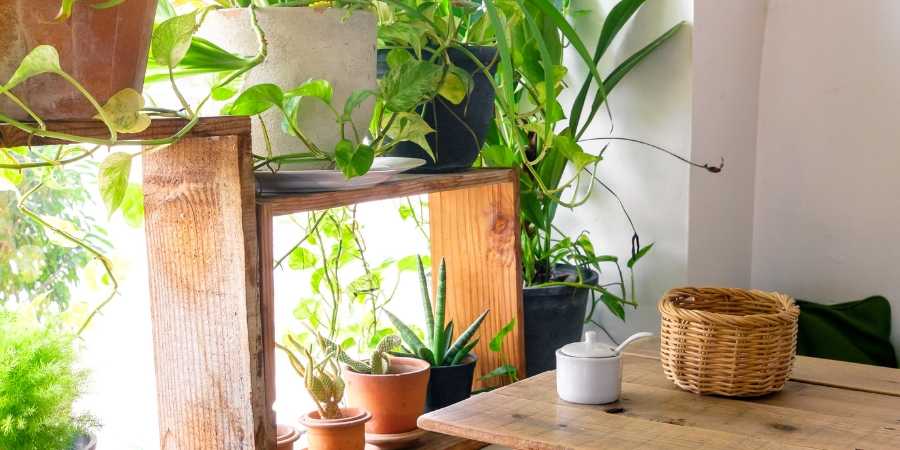
Research by NASA and the Associated Landscape Contractors of America (now the National Association of Landscape Professionals) has shown that houseplants and the potting mix they grow in can help eliminate air pollutants like volatile organic compounds found in homes and office buildings.
Keep Plants Healthy with Minimal Care
Successful indoor gardening starts with proper plant selection and continues with proper care. Once you get started you might just be surprised at how easy it is to grow an indoor garden.
Select plants that match the growing conditions such as light and humidity, as well as your schedule. Keep in mind trees in the yard, awnings over windows and sheers decrease the light your indoor plants receive. Consider moving plants to a sunnier south window during the shorter gray days of winter. And try rotating plants between low and bright light conditions every few weeks.
If your plants are struggling due to limited light, consider investing in energy efficient full spectrum LED lights. There are now more affordable and stylish lighting options available.
Keep maintenance requirements in mind when selecting plants. Cacti and succulents are perfect for busy people with lots of light. Pothos, philodendron, snake plant, Chinese evergreens, cast iron plant (Aspidistra elatior) and ZZ (Zamioculcas zamiifolia) plants work well for low light situations and people who like to provide minimal care.
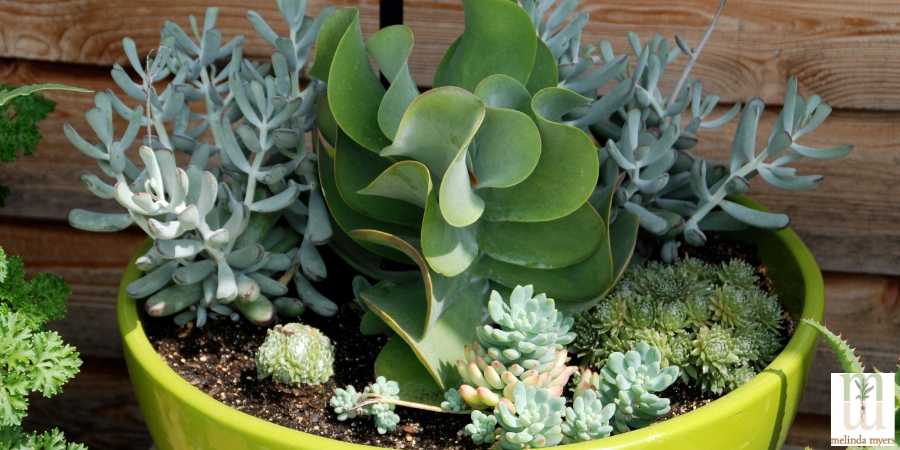
(Image: Succulents)
Water all indoor plants thoroughly and as needed. Frequency will vary with the plant, growing conditions, and potting mix. Use your finger as a moisture meter. Poke it into the top inch or two of potting mix. When the potting mix is about the consistency of a damp sponge it is time to water most tropical plants. Allow cacti and succulents to go a bit drier. It is best to err on the side of less frequent watering for these drought-tolerant plants. You’ll need to water and fertilize plants growing in low light less often.
If the potting mix gets too dry it is often hard to rewet. Just place your houseplant in a container of lukewarm water until the potting mix is thoroughly moistened.
Soon you will be able to abandon the finger test for visual clues. Water plants when the leaves look a bit less perky, not yet wilting, and a bit off color. Or use the lift test. You’ll find the pot will be much lighter when the plant is in need of water.
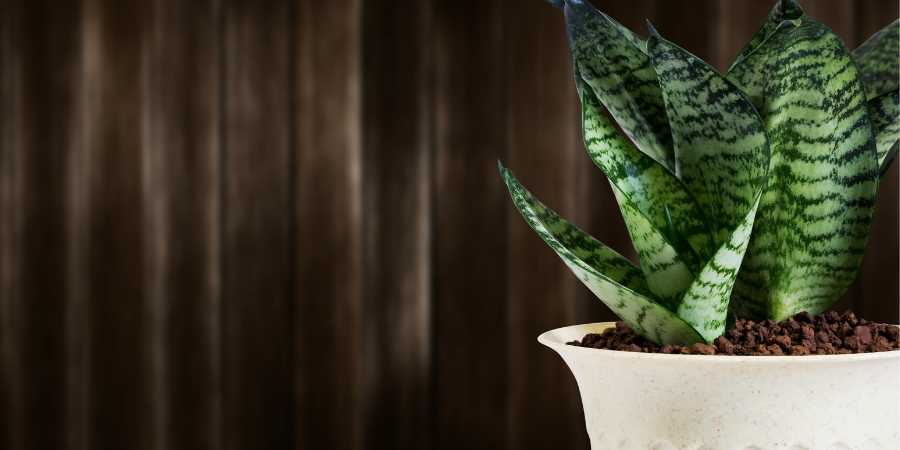 (Image: Snake Plant)
(Image: Snake Plant)
Create a humid environment for your tropical plants. Place them on a gravel tray to increase humidity, avoid root rot and decrease your workload. Place pebbles in a saucer or other shallow container. Set your plant on top of the pebbles. When you water thoroughly the excess water collects in the pebbles and the pot rests safely above the water. This eliminates the need to pour off the excess water and prevents root rot that occurs when plants sit in a water-filled saucer. And as the water evaporates it increases humidity around the plant.
Group your plants together for easier maintenance, increased humidity, and added beauty. As one plant transpires (loses moisture from its leaves) its neighbors will benefit from the increase in humidity.
Fertilizing Indoor Plants
Fertilize based on plant need and your garden goals. Plants with pale and stunted leaves may be in need of a nutrient boost. Fertilize more often when trying to stimulate faster growth.
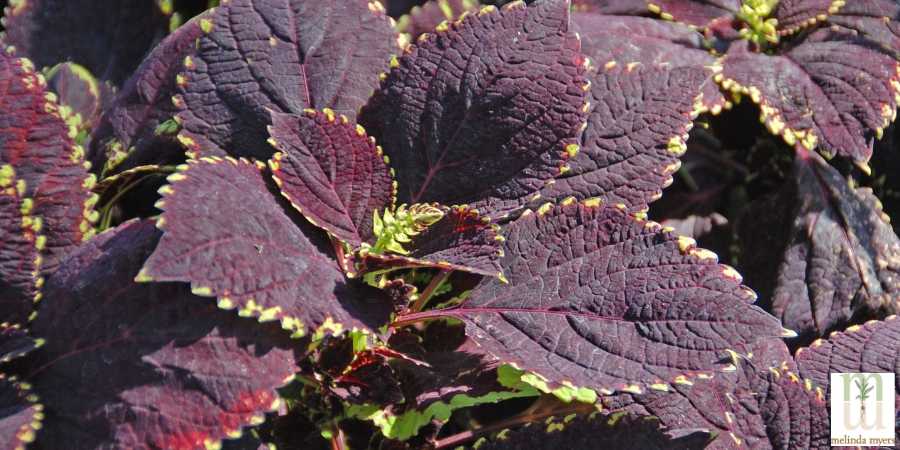
(Image: Coleus Plant)
Recently purchased houseplants will not need to be fertilized for several months. Most have been fed with a slow release fertilizer. Check the label on the potting mix used when transplanting houseplants. Many planting mixes contain fertilizer that provides months of nutrients for your plants.
Always read the label before fertilizing. Consider starting with a dilute solution, about half the recommended rate. See how your plants respond. You can always add more but you cannot take excess fertilizer out of the soil. Restrict fertilization to actively growing plants. This is usually March through November for most indoor gardens.
Milorganite is safe to use on plants but most people do not like the earthy smell in their home. And dog owners may find their pets digging in the Milorganite fertilized plants. If you opt to use this slow release fertilizer indoors, work it into the top few inches of potting mix to help mask the smell.
Keep Children and Pets Safe when Gardening Indoors
Reduce problems and calm your fears by keeping plants out of the reach of children and pets. Grow plants in hanging baskets or place on high shelves. Teach children to never eat any part of a plant, indoors or out, without talking to a trusted and knowledgeable adult first.
Select pet-friendly houseplants like African violet, Christmas cactus, baby tears, prayer plant, spider plant, snake plant, and coleus. Visit the American Society for the Prevention of Cruelty to Animals website (ASPCA.org) and talk to your pediatrician for a more complete list of safe plants.
Make a list of the plants you are growing. If a pet or child ingests one and you are concerned about poisoning, you’ll have the needed information for the doctor or vet.
Moving Plants to a Larger Container
Over time your plants may outgrow their container. Pot bound houseplants often have stunted growth and water passes quickly through the root filled soil.
Take a look at the roots before moving your plant to a bigger container. Slide the plant out of its container about halfway through the watering cycle. If roots fill the soil or circle around the root ball, it is time to move the plants to a larger container.
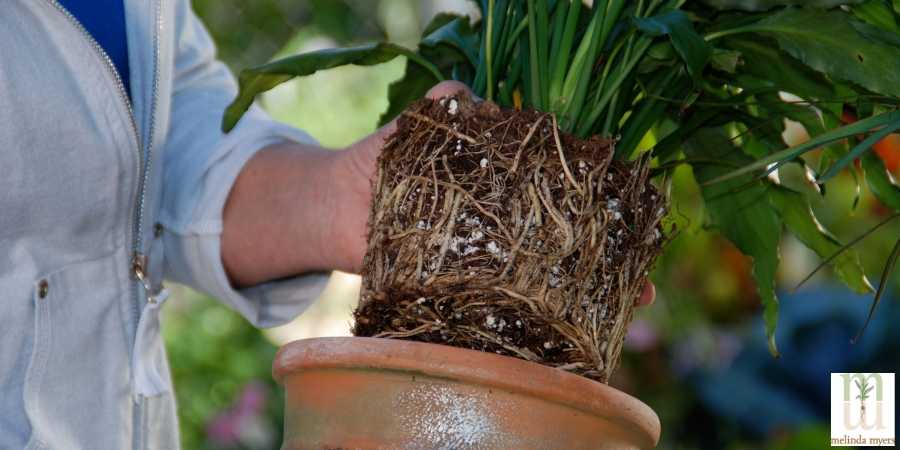
Select a container with drainage holes only one no more than two inches bigger in diameter. Add a bit of soil to the bottom of the pot so your houseplant will be growing at the same depth as it was before. Slice through or tease apart any circling roots. Circling roots left unchecked will continue to circle the pot and eventually strangle the plant. Fill the space around the roots with well-drained potting mix and water thoroughly.
Adjust your watering schedule to accommodate the new growing conditions. The additional potting mix will hold moisture longer so you usually need to water less often.
Root pruning is an alternative to moving plants to a larger container. Though a bit risky, this may be the only solution for gardeners that lack the space, larger containers or strength to move large plants into the next size pot. Carefully remove the plant from the container. Trim about an inch of roots off the bottom and around the sides of the root ball. Add fresh potting soil around the root ball so the plant is growing at the same depth as before. Water thoroughly and whenever the top few inches of soil are slightly damp. Wait for the plants to fully recover before fertilizing.
Move recently transplanted houseplants to a bright location out of direct sunlight. Water thoroughly as needed. In a week or two, move them back to their permanent location.
Now is a great time to get started or to expand your indoor garden. Garden centers and florists are selling a wider variety of plants so you are sure to find just the right one or ones for your home.

